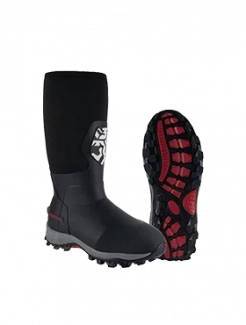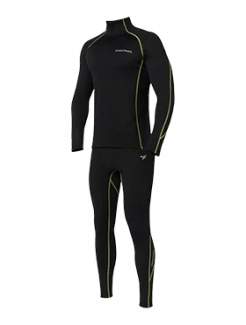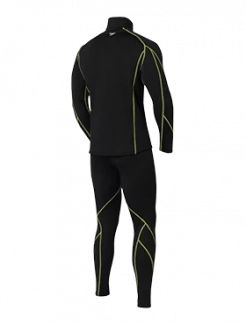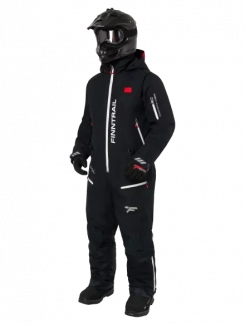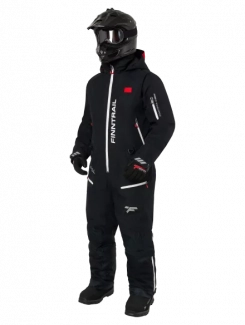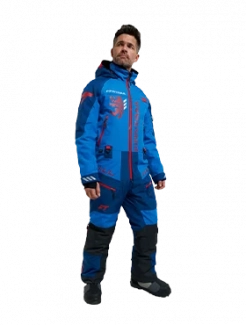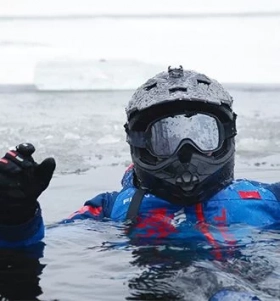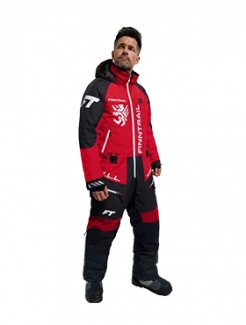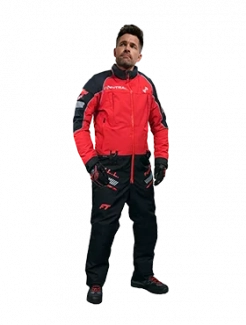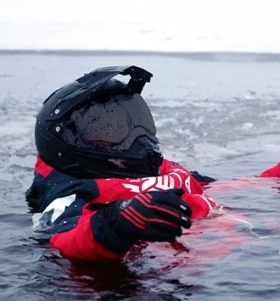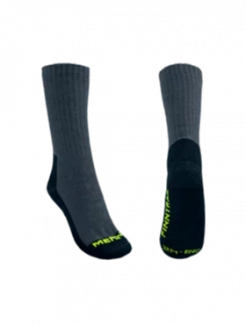How to Find Ice Fishing Spots Without a Fish Finder
Fishing on the ice without a sonar may test your patience, but there is a certain hunter’s thrill in it. The quiet satisfaction of getting to know the ice and the hidden world beneath it on your own terms without the help of electronics is exciting. When you have the right knowledge on how to find good ice fishing spots, it becomes a matter of observation, patience, and strategic thinking. But the most important thing here is to be curious about what happens under the ice surface and understand how to use maps, natural clues, and read the terrain.
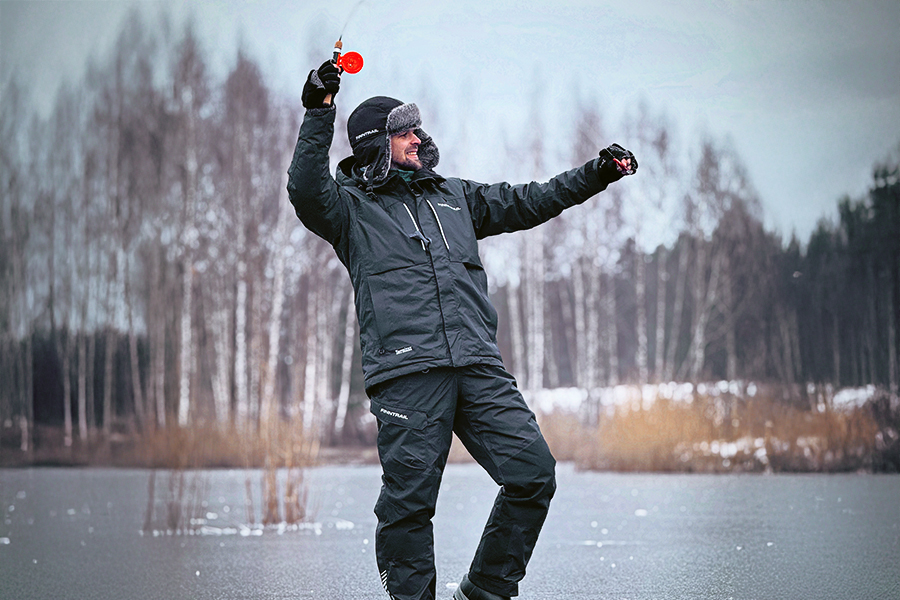
How to find ice fishing spots?
1. Have a chat with the staff at local bait shop
If you are wondering how to find places for winter fishing near me, then, you should start with visiting the tackle shop. The sellers in these shops are usually very talkative and friendly and can suggest a place near the shop where you can definitely have a good catch. They are interested in selling more gears, lures and rods , which means that they are potentially interested in your successful fishing. Moreover, their advice on choosing baits is really valuable and has been tested by the experience of many buyers.
2. Go online
Experienced anglers know that once they share the location of their honey holes with someone else, chances are the next time they go back, the bite will be gone because either the fish have been caught or they have been fed too many baits. That explains why most of the fishermen are secretive about where they usually go and whether it was successful or not. At the same time, many fishermen are willing to share their knowledge online on different fishing forums. So, you can search for “best ice fishing spots near me” or follow The Hull Truth or IceShanty, you will find a lot of information from the experienced anglers on where to fish.
3. Check the depth maps and bottom structure
The most powerful tool for any ice angler, even without a fish finder, is a good depth map of the lake. Pay close attention to:
• Underwater humps and points
• Steep drop-offs (breaklines)
• Channel edges and transition zones
• Flat areas near deep water
If you tend to find the best fishing spots, then, you have to become friends with Navionics WebApp, Lake-Link, Google Maps, or Google Earth. Bathimetric maps are free and you can use them online before going out fishing. You need to check the differences in water terrain and bottom transitions. For example, if you see the change of weed to sand, it might be a favorite spot for predatory fish to hide and hunt there from weed to an open area. Northern Pike or Yellow Perch are the common habitats of these areas.
4. Pay attention to the clues of nature
If you want to learn how to pick a good ice fishing spot without any devices, you need to be attentive to the signals of nature. It does not assume that you have to go to the lake or river and just start looking for fish as it will take a lot of time. Conversely, you can use Google Maps for this purpose and do a small research first. So, you have to take note of the next things:
• Arm creeks. Both prey and predators are often attracted to stay here because the flow of the river is slower there and it brings more nutrients and organic matter to the arm creeks. In winter, there is more oxygen here than in the river or lake and that is why fish tend to live here.
• Weed line. Another favorite spot for fish to stay is the area of underwater plants. There are several reasons for such behavior. First, the water there is a bit warmer which makes it more appealing in winter. Second, there are more water inhabitants living on the plants, like larvae or crustaceans. Third, weed lines are natural protectors where small fish tend to hide.
• Bottom transitions. If you have an underwater camera, then, it is easier to check where sand becomes muck or where gravel shifts to clay. These places are another feeding zones, especially for bottom-oriented species like bluegill, perch, and crappie.
• Shoreline clues. A steep, rocky shoreline often mirrors underwater contours. If it drops off fast above water, it probably does the same beneath which means deeper water close to shore, a prime spot for early or late ice.
5. Understand seasonal fish behavior
Fish location that serve best the criteria of good ice fishing spots near me changes throughout the ice season, so adjust your search accordingly:
Early Ice (First 2–3 Weeks):
• Shallow flats near weedlines or shoreline points are hot zones.
• Oxygen is plentiful, and fish are actively feeding after fall transitions.
Mid-Winter (Deep Freeze):
• Fish shift deeper, especially as oxygen levels drop in the shallows.
• Target basins, deeper holes, and edges of submerged structure.
• Panfish often suspend over deeper water — try different depths in the water column.
Late Ice:
• Oxygen levels improve again as snow melts.
• Shallow areas reawaken, especially near inlets and creek mouths.
• Fish return to flats, weedbeds, and the tops of drop-offs to feed before spawning.
6. Drill smart, not random
The most effective way to find fish without electronics is to systematically drill and test holes in a strategic grid. Here is how:
• Pick a promising area (drop-off edge, basin flat, weedline).
• Drill 4–6 holes in a line, from shallow to deep.
• Test each hole by jigging at various depths.
• Look for signs: baitfish, weed contact, subtle bites.
• Focus on areas that show any activity.
Once you get a nibble or feel a strike, concentrate your effort. Drill additional holes around the productive one and fish it thoroughly. It’s more efficient to hone in on a likely zone than drill 50 random holes across the lake.
7. Watch Other Anglers and the Ice
The best quality of a successful fisherman is attention to details. So, sometimes, the best strategy on how to find a good ice fishing spot is simply go to the nearest frozen lake and copy what other anglers do.
• Watch for the locations where other people are fishing. Locals or regulars have probably done it before and they do not usually waste their time around fishing holes without any fish.
• If there are no other anglers, then, look for fresh holes, foot tracks, or clusters of shacks — they usually form around productive areas.
• Be respectful of the private space of other people, but do not hesitate to use these clues to navigate on the ice.
Even if you see someone’s footprint in the snow, they can tell a story: are people walking straight to a certain point every day? Did someone drill a trail of holes along a drop-off? These signs often indicate spots worth checking out.
8. Learn more about key environmental clues
Experienced ice anglers know that the lake surface tells a quiet story, if you know what to look for. Changes in ice thickness, for example, are not just about safety. Slightly thinner ice in certain spots can mean there’s a spring underneath or a bit of moving water. Fish like that. They will often gather in those pockets where the water’s a bit more oxygen-rich or just a touch warmer.
Keep an eye out for tiny bubbles frozen in the ice. These often show up above old weed beds and can be a sign that some vegetation down below is still producing oxygen, which means baitfish, and in turn, predators, might not be far behind.
Even the snow cover tells you something. Areas with less snow allow more sunlight to filter through the ice, encouraging whatever’s left of the weed growth to hang on a bit longer. That light, that life, draws in smaller fish — and where the snacks go, the bigger ones follow.
9. Use underwater cameras
Underwater cameras are not like an eye underwater and it does not always give a clear picture on what is going on under the ice. Instead, if you want to use it at night time in muddy water or in the weed beds, it would not give the high quality of the picture. The best idea here is to use it for quick inspection of new ice fishing spots. By doing this, you will have an overview of the type of fish swimming underneath ot their reaction to new baits.
Ice Fishing Without a Fish Finder: Checklist
Here’s a quick-reference checklist to guide your search:
-
Study the map for changes in the landscape
-
Target transition zones — depth and bottom changes
-
Look for inflowing creeks, springs, and green weeds
-
Consider the season and adjust depth accordingly
-
Drill test holes in grids, from shallow to deep
-
Watch ice thickness, tracks, and other anglers
-
Concentrate effort around the first sign of life
-
Use vertical jigging to probe different depths
Final Thoughts
If you aim to have a list of best ice fishing spots near me without a fish finder, then you have to learn how to read the water like old-school ice anglers always have. With the right blend of map knowledge, natural observation, and strategic exploration, you can consistently locate fish through the ice.
In fact, many seasoned anglers believe that going “electronics-free” sharpens your instincts and helps you better understand the underwater world. Whether you are targeting panfish on a frozen farm pond, or chasing walleye on a massive northern lake, you just need to know where to drill.

